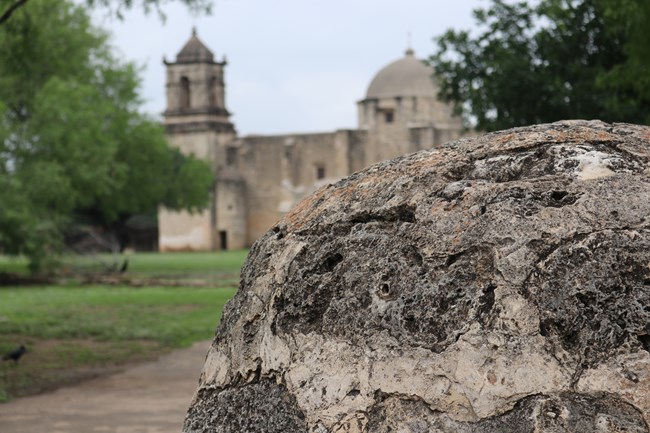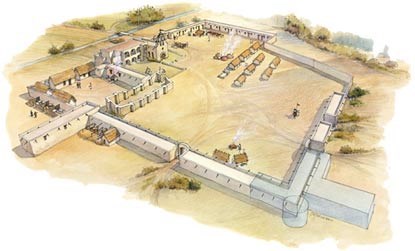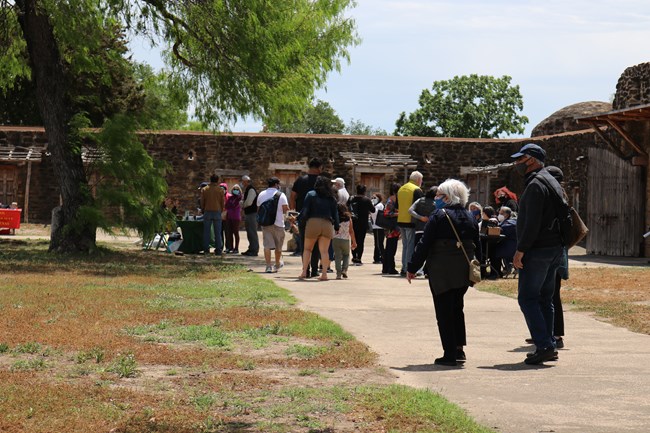
NPS Photo. 

NPS Photo Before the Spanish colonial era, hundreds of small native bands inhabited these South Texas lands for thousands of years. The culturally diverse groups of Indigenous bands that lived on these lands are often now referred to under one homogeneous group, Coahuiltecan. This name was given to them by the Spanish based off the geographical region they inhabited, Coahuila y Tejas. Many families of South Texas and nothern Mexico can trace their Indigenous roots back to these Coahuiltecan nomadic hunter-gather groups. 
NPS Photo. Living quarters were built inside the missions, against the compound walls for the Indigenous neophytes and one or two Spanish soldiers. The church was the focal point of the missions and the missionary lived in the convento right next to the church. Workshops and storerooms dotted the central grounds. Outside the walls were the croplands and ranches, and the danger of competing groups. 
NPS Image Many local families have found connections to these missions.For local archives and records this is a comprehensive list of the San Antonio area archives and special collections. Compare Pottery Artifacts 

Left image
Right image

We’re Still Here: Mission Descendant StoriesThe history and culture of San Antonio Missions National Historical Park lives on through the families and stories of mission descendants. “We’re Still Here: Mission Descendant Stories” puts faces to the oral histories and memories of mission descendants in San Antonio. The exhibit recognizes families that have deep connections to these missions. These families make the missions a living community. Descendant families come from a diverse group of Texans with combinations of Indigenous, Latino, and European heritage. San Antonio Missions National Historical Park preserves and protects architectural, archaeological, and landscape features that demonstrate a complex interweaving of cultures that prevails in this community today.
Click this link for "We're Still Here: San Antonio Mission Descendant Stories". Research Articles |
Last updated: May 5, 2025
